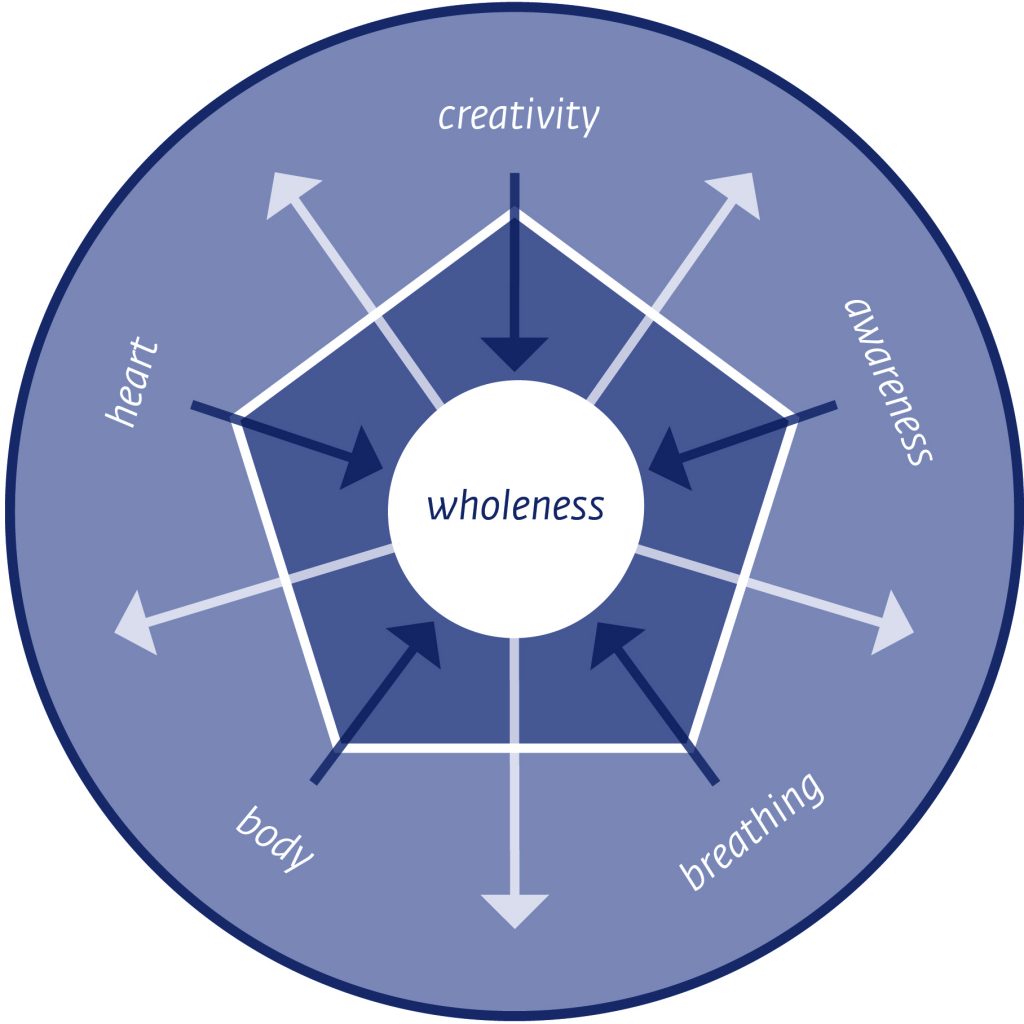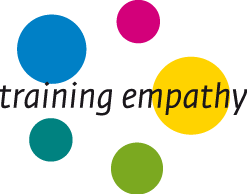theory
“Children – Mindfulness, Empathy, Compassion and Prescence”
What is needed most of all in the development of children is self-accord, being able to sense one’s center of being and from there to come into genuine contact with other people. Self-accord rests on a number of capabilities that we are all endowed with from birth. The best way to help children to establish greater inner authority is therefore not to teach them anything new, but rather to support them in not losing what they have had from the beginning.
To put it simply: self-accord and genuine understanding between people happen when we settle into and sense our whole being and come into contact with others from this wholeness. Unfortunately, experience has shown that putting this into practice, to reach and maintain our wholeness, is not so simple.
Pentagram

In our curriculum we work on this issue from a perspective developed by Jes Bertelsen. He condenses human wholeness in describing five domains or competences: the body, breathing, the heart (empathetic feelings), creativity and consciousness. These five competences and their relationship are graphically represented as a pentagon. One might argue that schools and other institutions involved in the education and development of children already take account of these areas. However, we believe that more clarity and depth are needed:
In physical education, children are exposed to a variety of physical exercises through which they feel their bodies. Althought these are beneficial experiences, the skills are primarily acquired through discipline and competition. Sports and physical exercise in general do not necessarily lead to deeper awareness of the body.
With respect to the heart and empathetic feelings, this too is an area that receives attention in our education systems, but our culture lacks sufficient knowledge in this area. Most of us are finding it difficult to distinguish between the various emotions as they relate to the setting of limits and self-assertion on the one hand, and those having to do with sympathetic understanding and self-accord on the other. Moreover, we are not sufficiently aware that qualities and feelings of the heart can be trained. Often to great effect.
Neither are we aware that mental clarity, memory, concentration and the analytical abilities that are trained in academic subjects make up only a small part of the potential of human consciousness. For example, our culture has only scant knowledge of the importance and utility of pauses. Of how taking even short breaks, provided they are taken consciously, can wipe the inner slate clean by exploiting the gaps in the content that normally fills our minds in an unbroken stream. In these gaps there is an openness which, when we allow ourselves to connect with it, has an immediate calming, replenishing and revitalizing effect.
The greatest emphasis in this curriculum is on a potential that is at once the most important and most meaningful, but as yet largely unused. It may seem obvious and almost banal in theory, but in practice it constitutes a very deep and highly effective procedure: reminding children – and adults – to look inward toward their centre simultaneously from several angles or domains, that is, as far as possible, from their whole being. And to remember or sense this wholeness when they are in contact with others.
Not only children have lost touch with themselves. Also many parents, teachers and other adults with whom children come into contact have lost touch with themselves in various ways, rendering them incapable of establishing the authentic presence and empathetic contact that are necessary for creating good relationships and connections.
Many professionals working with children regard this as one of today’s biggest challenges, and they are looking for solutions. They are very open to initiatives that can promote well-being and respect on both sides of the teacher´s desk, for teachers and students alike. Empathy, presence, and awareness toward other people are strengthened when children encounter these very qualities. It is not possible for anyone to develop empathy and a sense of solidarity through punishment.
We therefore focus on preparing professionals working with children to be present with personal authority. Relations are established and maintained by the people in them, and the child-adult relationship is borne primarily by the adult. The adult is the one who can provide the qualities he or she would like to see in the relationship. Professionals therefore need to develop their self-accord, their contact with their inner strength and judgment. Fortunately there is no longer a powerful external disciplinary power in our society. We all have to learn to guide ourselves and to make our existential and social choices by using our own solidly anchored judgment.
This requires professionals who, in addition to being skilled professionals, possess such personal authority and authenticity. This can be developed through instruction and engagement in exerceses that strenghten contact to the heart, to consciousness, to the body, creativity, and breathing. These exercises in themselves help develop the professionals’ competency in relationships; this in turn is a necessary prerequisite for them to be able to pass on the exercises to children. In addition, most professionals need to focus on how they are in contact with children, especially in difficult and contentious situations that require both a comprehensive inner contact and empathy with the children. This helps to ensure that the conduct and overall presence of professionals have a positive influence on the relations between and the development of both parties and help to create a mutually supportive and beneficial learning and developmental environment.
For example, when teachers are able to teach in an authentic manner most of the time, with genuine contact to the children, this will begin to be felt both by the children and the class as a whole. The teachers, each with their individual personalities, become role models, and for the most part there will be harmony between what they say and what they do. This concordance between words and action is a requirement in order to be able to truly reach the children.
